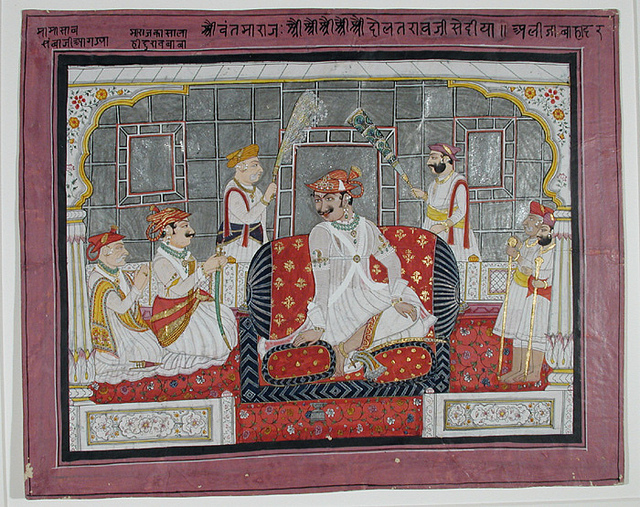In 1801, the cis Sutlej Sikh chiefs of Patiala, Nabha, JInd, Kaithal, Ladva and Thanesar approached his all powerful deputy Perron, to afford them protection against the ravages of George Thomas, the Irish adventurer, who, after a short period of employment under Appa Khande Rao, had carved out the independent kingdom of Hansi. A Maratha force 12,000 strong, marched under Louis Bourquien, expelled Thomas from the Malva region and liquidated his tiny principality, but Perron subjected the Sikh chiefs to heavy exactions and tributes.
Daulat Rao`s influence over the cis Sutlej region was, however, short lived. In September 1803, he was defeated by the English at Delhi and in November at Lasvari. He ceded to the British the districts of Delhi, Gurgaon, Rohtak, Hissar and Agra. The Marathas thus lost their influence in northern India. Daulat Rao Scindia died on 21 March 1827.
References :
1. Griffin, Lepel, The -Rajas of the Punjab [Reprint]. Delhi, 1977
2. Gupta, Hari Ram, A History of the Sikhs, vol. III. Delhi, 1974
3. Gian Singh, Giani, Panth Prakash [Reprint]. Patiala, 1970
Daulat Rao Scindia (also spelled Sindhia) occupies a fascinating niche in late‑18th and early‑19th century Indian history. As the Maratha chief of the powerful Scindia dynasty ruling Gwalior, he ascended to power in 1794, following the illustrious Mahadji Scindia. Soon after his accession, he was appointed as the Naib Vakil-i-Mutlaq (Deputy Regent) of the Mughal Empire—a role that effectively made him the Mughal viceregent. This dual capacity allowed him to wield significant authority over the remnants of the once‑vast Mughal court, with the titular emperor Shah Alam II under his control, while simultaneously reinforcing Maratha prominence in North India.
His administration was marked by both ambitious expansion and sophisticated military modernization. To consolidate his power, Daulat Rao Scindia employed notable European officers such as Comte de Boigne and Pierre Cuillier Perron. Their expertise enabled him to shape a formidable force that secured Maratha control over pivotal regions like Delhi, Agra, and territories beyond the River Jamuna. Yet his tenure also coincided with growing challenges: as the British East India Company expanded its influence, decisive defeats in battles during the Second Anglo-Maratha War (circa 1803) ushered in a gradual decline of Maratha authority in northern India, forcing him to cede significant territories to the British.



